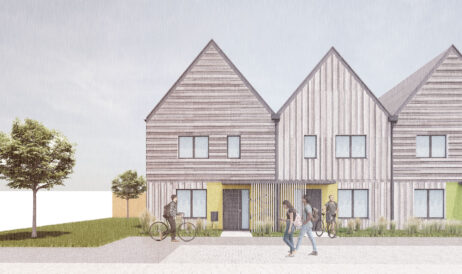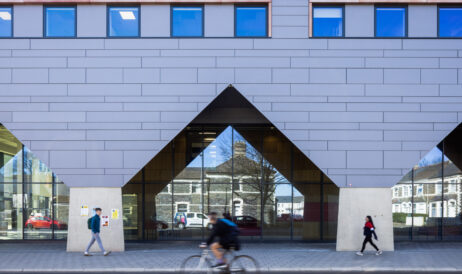Architect, Francesca Lewis says our lockdown experiences can, and should, inform senior living designs for the better.
December 2020, two lockdowns down and it’s safe to say this year has been an absolute rollercoaster.
Furlough offered me a great opportunity to volunteer. I did shopping bits, picked up prescriptions and ran errands for both Age UK and Bristol City Council; it helped feeling like I was able to help others in such a strange time.
The most rewarding was telephone befriending. Working in the Senior Living sector I know first-hand the disheartening statistics that loneliness can cause, impacting not just mental but physical health and wellbeing for so many elderly people. A call companion offering half an hour’s chat might just be the highlight of someone’s week, and I was more than happy to help.
We had the best conversations. About old times, friends and family, putting the world to rights, and how being stuck inside was making us fed up.
It all started to point to the fact we have all finally experienced what it is like for many elderly people. Spending the majority of our time at home, confined to four walls, has been a challenge for many.
But for the vulnerable and over 70s it has meant even more time stuck inside and a heightened sense of isolation.
Two things have brought these themes into sharp focus this week. HAPPI Awareness Week has given us a great opportunity to reflect on what makes good quality design, especially for senior living. And, revisiting (over the phone) inhabitants Jane, Keith and Norma, at our Bournville Gardens scheme, gave us an idea of what works well and what they might change given their lockdown experiences.
Flexibility and adaptability of space is key
Open plan living arrangements have long been heralded as an improved way of living. But how well does this work when spaces need to simultaneously function as offices, schools, gyms and places of rest and relaxation?
For most of us, our days are structured by changing environments, nursery, office, gym, home. Those not able to go outside are now relying on their homes to satisfy that need for variety and structure – bedroom, kitchen, lounge, dining room, study, garden. Without a feeling of spatial transition, days can roll into one.
Occupant comfort is key for wellbeing and independence
Maintaining daily structure is key to our wellbeing and it has been evidenced that our Circadian rhythms also rely heavily on natural daylight.
It’s becoming more apparent that the physical characteristics of our immediate environment are important to occupant comfort and critical to a feeling of independence. We can easily forget that declining eyesight makes natural light all-the-more necessary to perform daily tasks.
Outdoor space
Plenty of us live in apartments and rely on communal outdoor space. With that privilege more or less taken away, it’s emphasised that private amenity, no matter the size, is a precious resource that can offer a much-needed connection with nature and the outside world.
I’ve been able to go out from about 4 o’clock in the Summer and you get the sun right on my patio – it’s been beautiful. And you get to watch people doing their laps round the [communal] garden in the evening time and that sort of thing. Having a lovely garden like this, what more could you want?
Keith Shaw, Inhabitant of Bournville Gardens
Connectivity is needed no matter the scale
We say social media is keeping us all connected – to family, friends, colleagues. But what if you aren’t au fait with technology? Well, your social network becomes your immediate neighbours and your connections to the outside world are reduced to whatever you can see through your window.
Our existing housing stock isn’t usually designed with neighbourly interaction in mind – something my colleague Sarah Jenkinson wrote about at the beginning of the first lockdown.
Through simple design measures, we can ease feelings of isolation and create a sense of community. Clusters and courtyards, semi-public and semi-private spaces ease feelings of isolation by creating opportunity for chance encounters and casual interactions with neighbours. These principles can be applied to any design, no matter the scale.
I can remember when we first moved in, a dear, sweet lady said, “It takes me about an hour to go down and buy a loaf of bread. Five minutes to buy the loaf of bread and the rest of the hour to talk to people.
Norma Broadbridge, Inhabitant of Bournville Gardens
Our needs evolve overtime
This all begs the inevitable question; what happens when we become less physically able? Of course there are physical interventions that we can take to make our home more accessible. We are all likely to need hand rails, variable height kitchen worktops and easy-turn taps at some point.
But only a small proportion of our existing housing stock is suitable for accessibility needs. Why does our built environment gradually restrict how we live – and enjoy – our lives? It is critical that we start ‘building for life’, and that means homes that can adapt to our evolving needs.
There is no ‘the elderly’ and ‘us’
All of this shows there is no ‘the elderly’ and ‘us.’ We are all people. We all enjoy being able to live in homes that enable us to be independent, to feel a connection with the outdoors, and know that we’re not alone. These small desires to accommodate our health and wellbeing are intrinsic to us all.
We are learning now more than ever, when health and wellbeing has become a national priority; that we can find joy in the smallest of things and the sense of community, both of which are so simple to account for in design. This will be fundamental to designing a ‘house for life’ and I know we can all take our lockdown experiences, no matter our age, to inform our senior living designs for the better.
Author, Francesca Lewis works on our Specialist Living team. Head over to our Inhabitant page to hear more from Bournville Garden inhabitants Jane, Keith and Norma.







